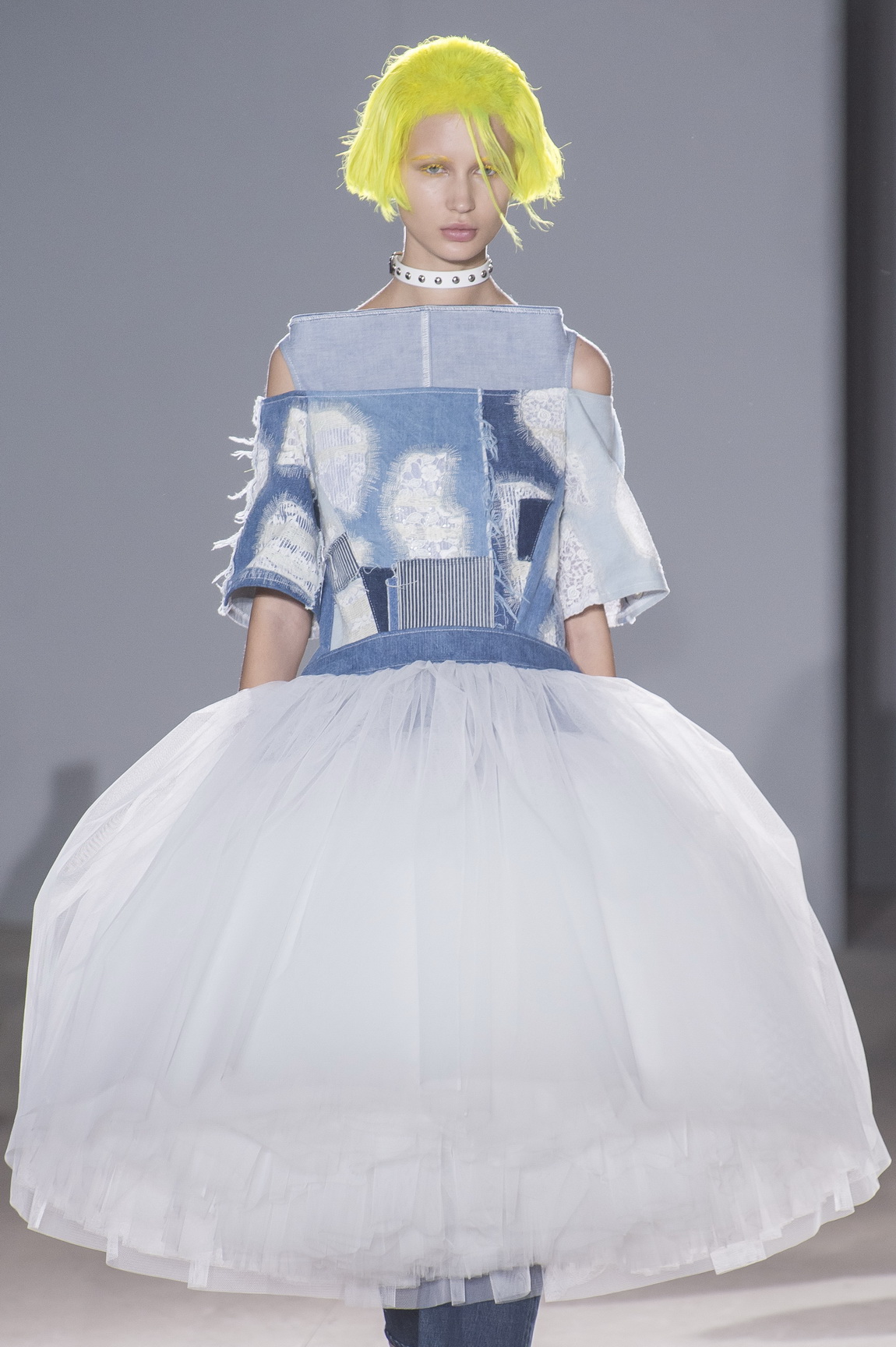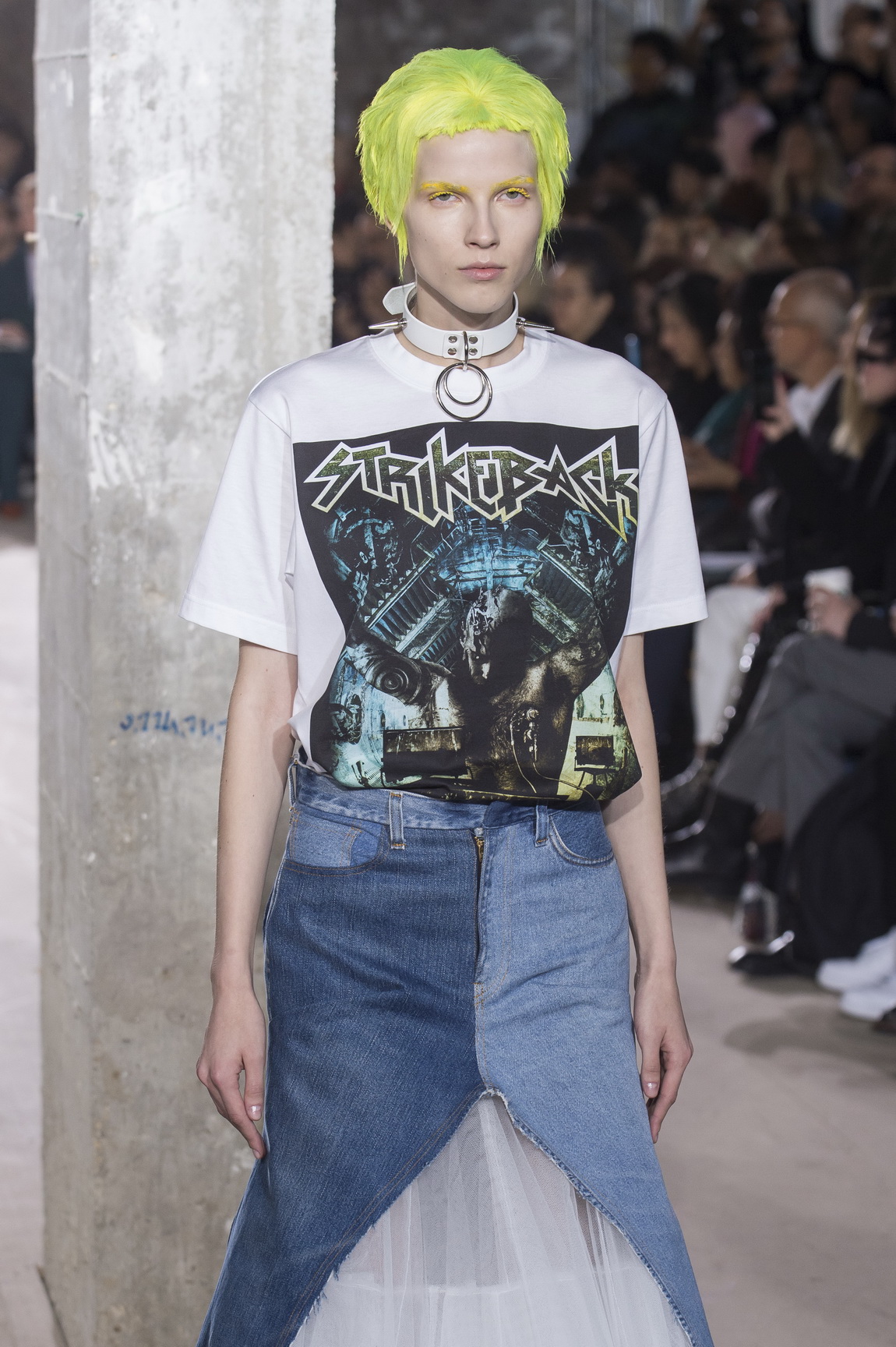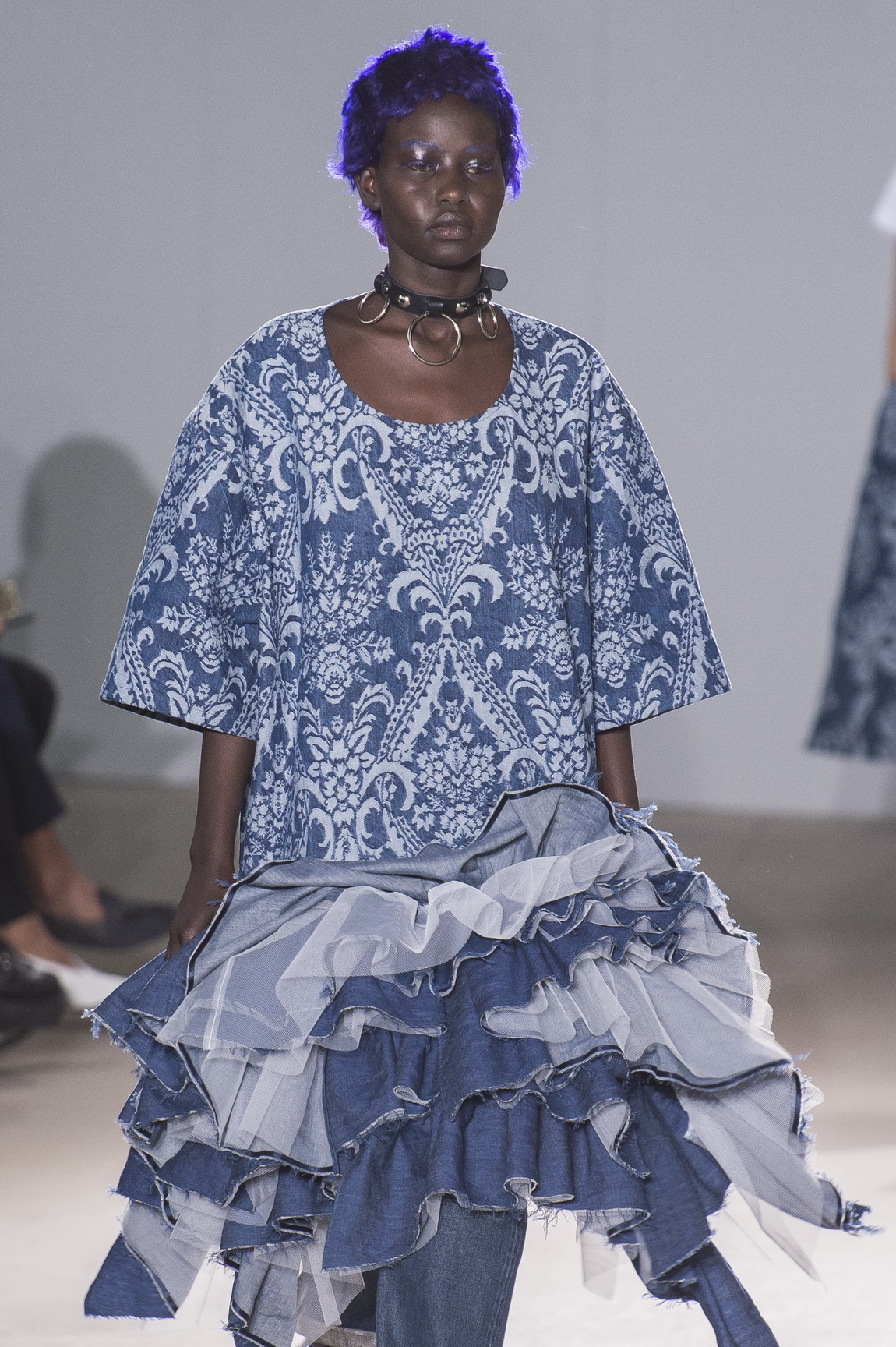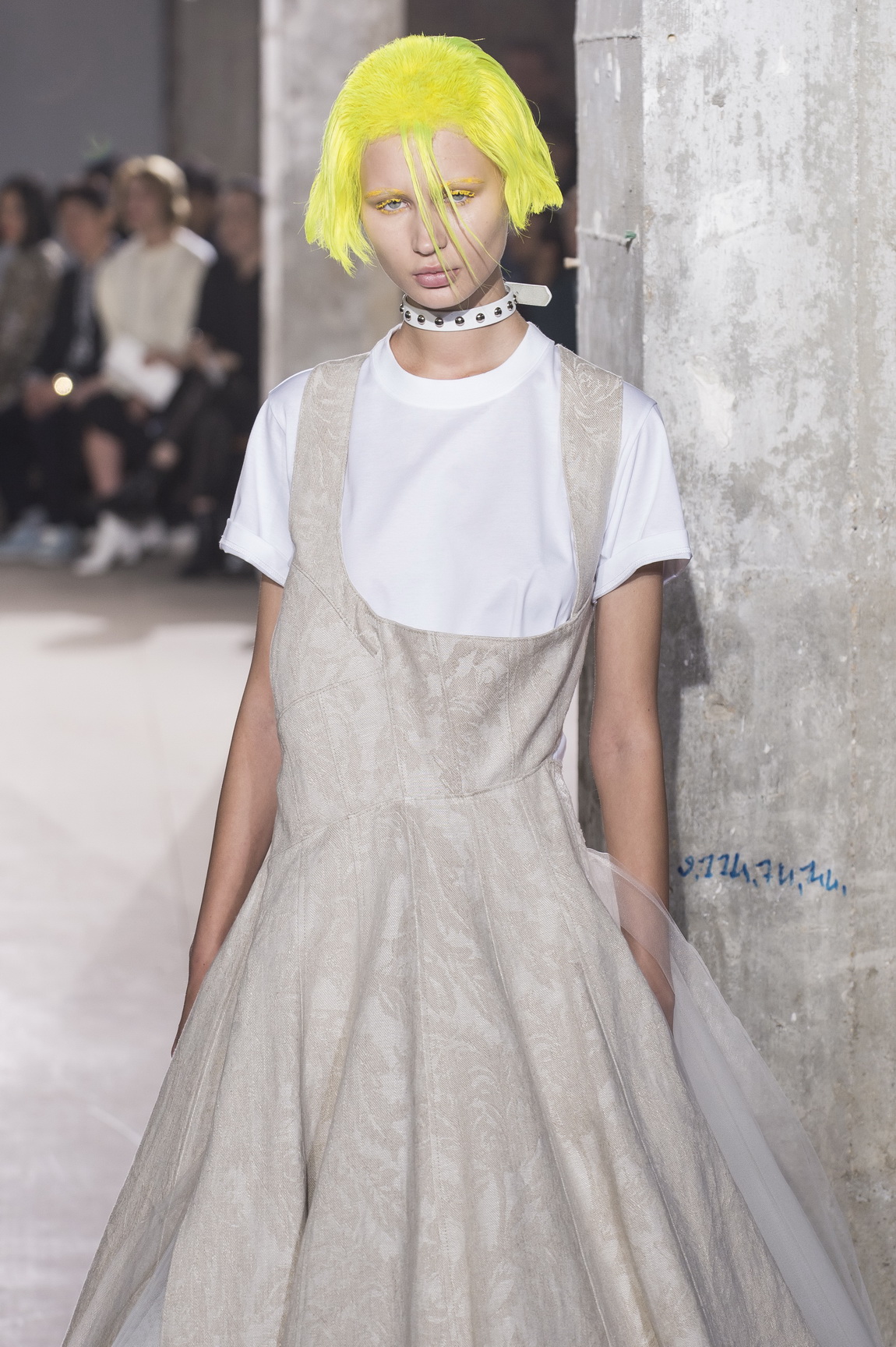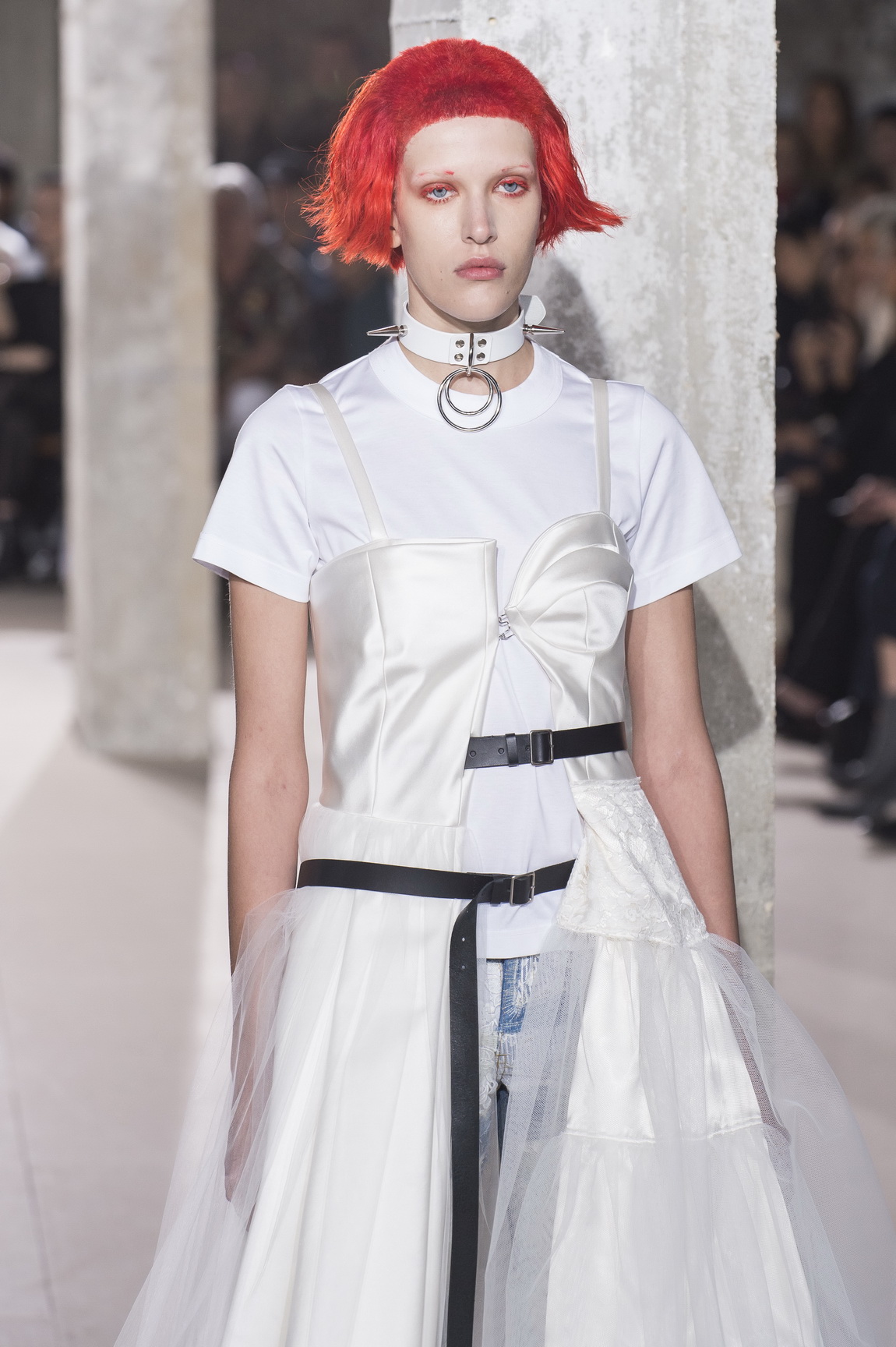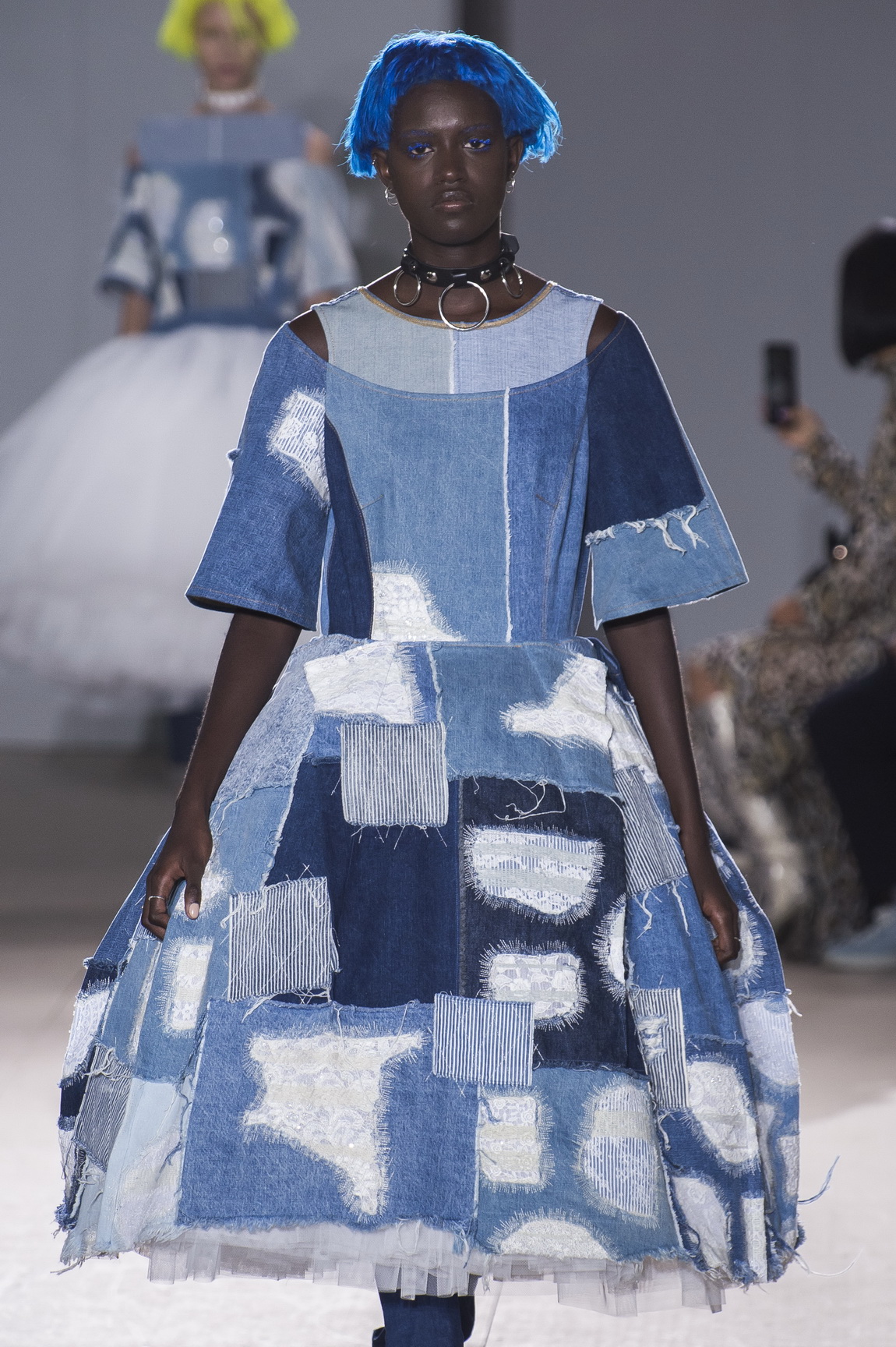On the morning after the night before, the fashion set were all discussing the debut of Hedi Slimane for Celine. The return of fashion’s sharply tailored, youth-obsessed prodigal son was always going to provide Paris’ most talked about show. But as Philophiles, Slimaniacs and everyone in-between sat down at the first show to make sense of the Slimane-induced seismic shift on the industry, Junya Watanabe and Noir Kei Ninomiya cut through the noise as they each crafted their own emotion-filled, poetry-fuelled worlds. The Celine conversation paused as each shifted the narrative from the business of fashion back to the art of it.
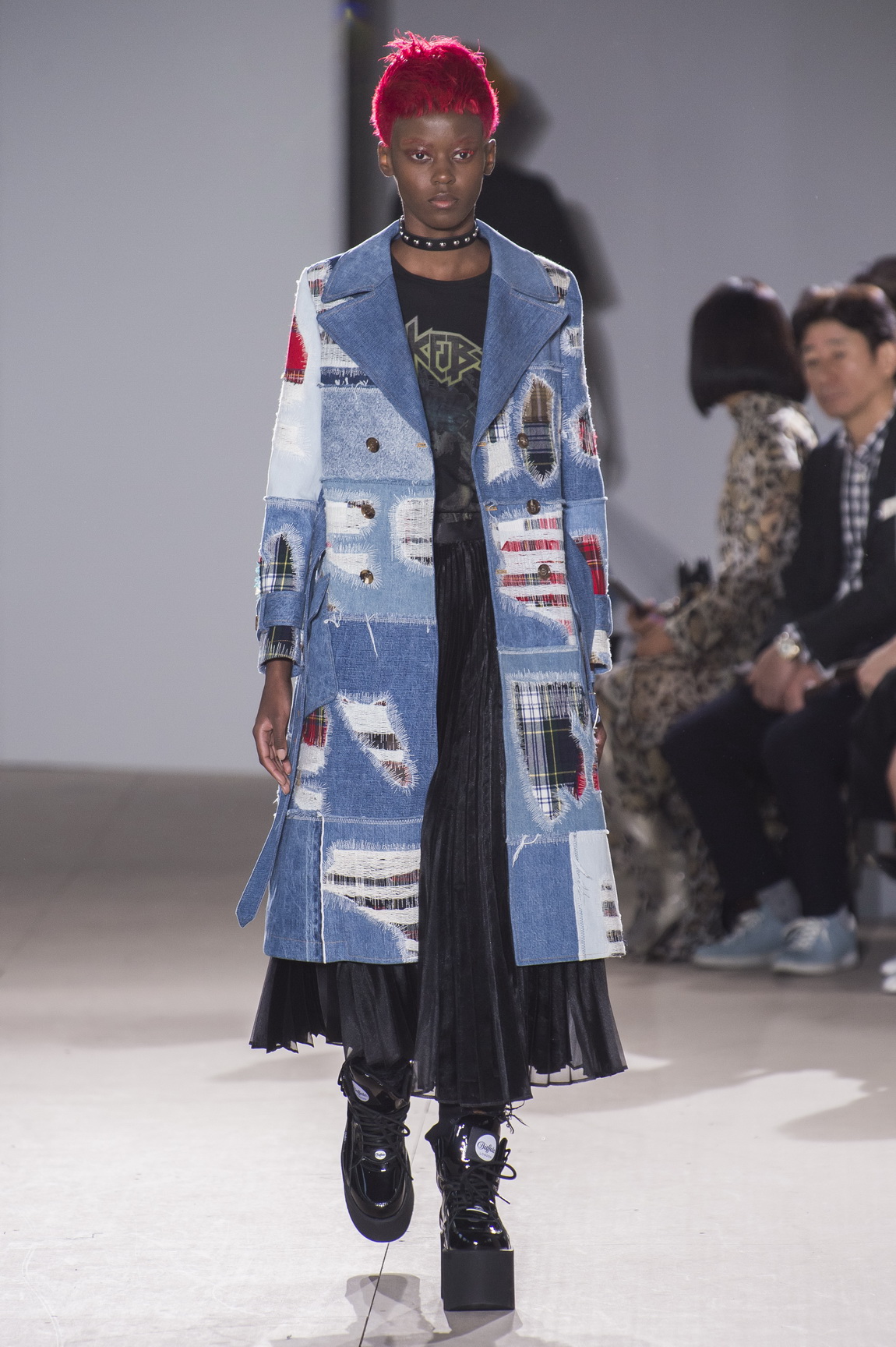
A desire to celebrate craft and rekindle the romance of creation has been a constant theme within this season’s standout shows. From Francesco Risso playfully waking us up with a celebration of creativity-in-process at Marni to Jonathan Anderson revelling in the beauty and sensuality in making things at Loewe, we have witnessed a creative rebellion against the fashion system and a retreat to the creative process. Whether it’s a reaction fuelled by the turbulent socio-political times we find ourselves in, a direct push-back against an ever-accelerating industry that is moving too fast for some, or just a desire to return to a simpler time, the most exciting creative minds are providing similar answers. From Junya Watanabe’s romance-fuelled hybrids of new and old worlds of dress, to Kei Ninomiya’s seed-spreading hair and fusion-filled geometric forms, a few of us on the frow were left with tears in our eyes. This is the power of artists.
Why? Because both provided sartorial poetry that explored a feminity in metamorphosis.
Coming at a time when the contorted smirk of Brett Kavanaugh is contrasted with the laid-bare emotion of Christine Blasey Ford, the dignity, respect and position of womanhood is front and centre of our minds. The hybrid and fusion of the women of Watanabe-san and Ninomiya-san offered hope just when we needed it most.

“Watanabe-san wanted to express the romantic feeling in rock, he used denim as a way to express this,” the succinct show notes explained. Few designers work with the great industrial fabric of denim quite like Junya does. He is a modern deity of denim where the everyday and familiar is transformed through a collage of technique from deconstruction. For spring/summer 19, he put the fabric back to the foreground of his attentions as he delighted in the dualities of soft and hard, stiff and fluid, restrained and free. Here, his tribe of highlighter-haired punks wore it juxtaposed with everything from 50s skirts to tulle petticoats, ballgowns to nightslips. The result was an intoxicating half-and-half effect. Femininity in transition. The message was that women could and should be allowed to be anything and everything they desire themselves to be.
From the moment the first model walked out in a protective cocoon and her Azuma Makoto and Takayuki Nukui-designed hair piece began to shed its seeds, we all saw the woman of today, both vulnerable and powerful. Throughout, as the seeds scattered across the catwalk and landed onto the black crow uniform of the frow (lint rollers were a must pre-show), there was a cross-pollination of ideas. Spring/summer 19 was a heady mix of textures, shapes (both voluminous and straight), materials ranging from the inexpensive to the luxurious and the natural to the human-made, all brought together through a tease of techniques that included gathering, pleating, layering, nom stitching and tape, to create something new. Taking the familiar, Ninomiya continually creates the otherworldly. Here, we left with the message that women today need to be protected, women need to be set free. We believe her.
